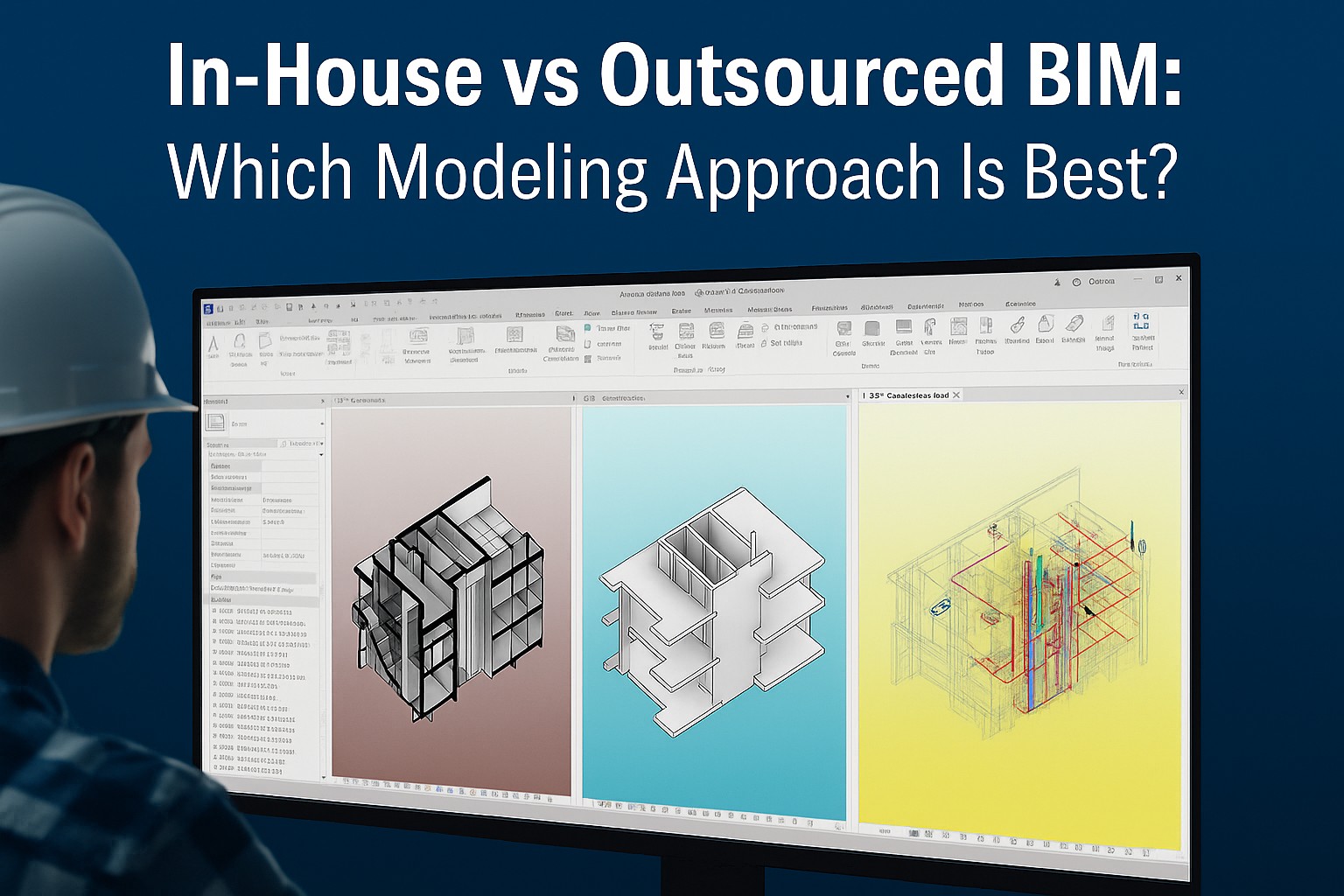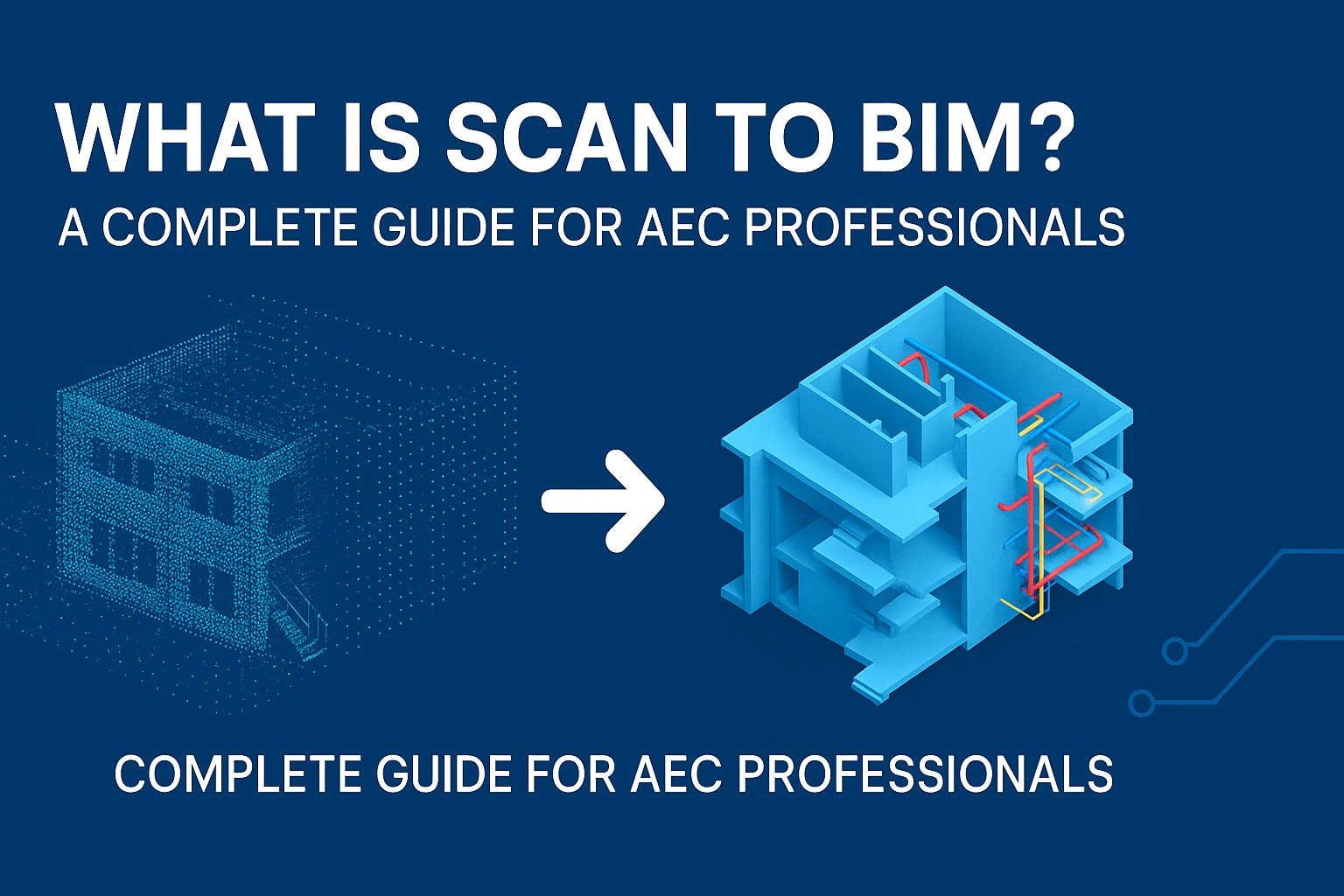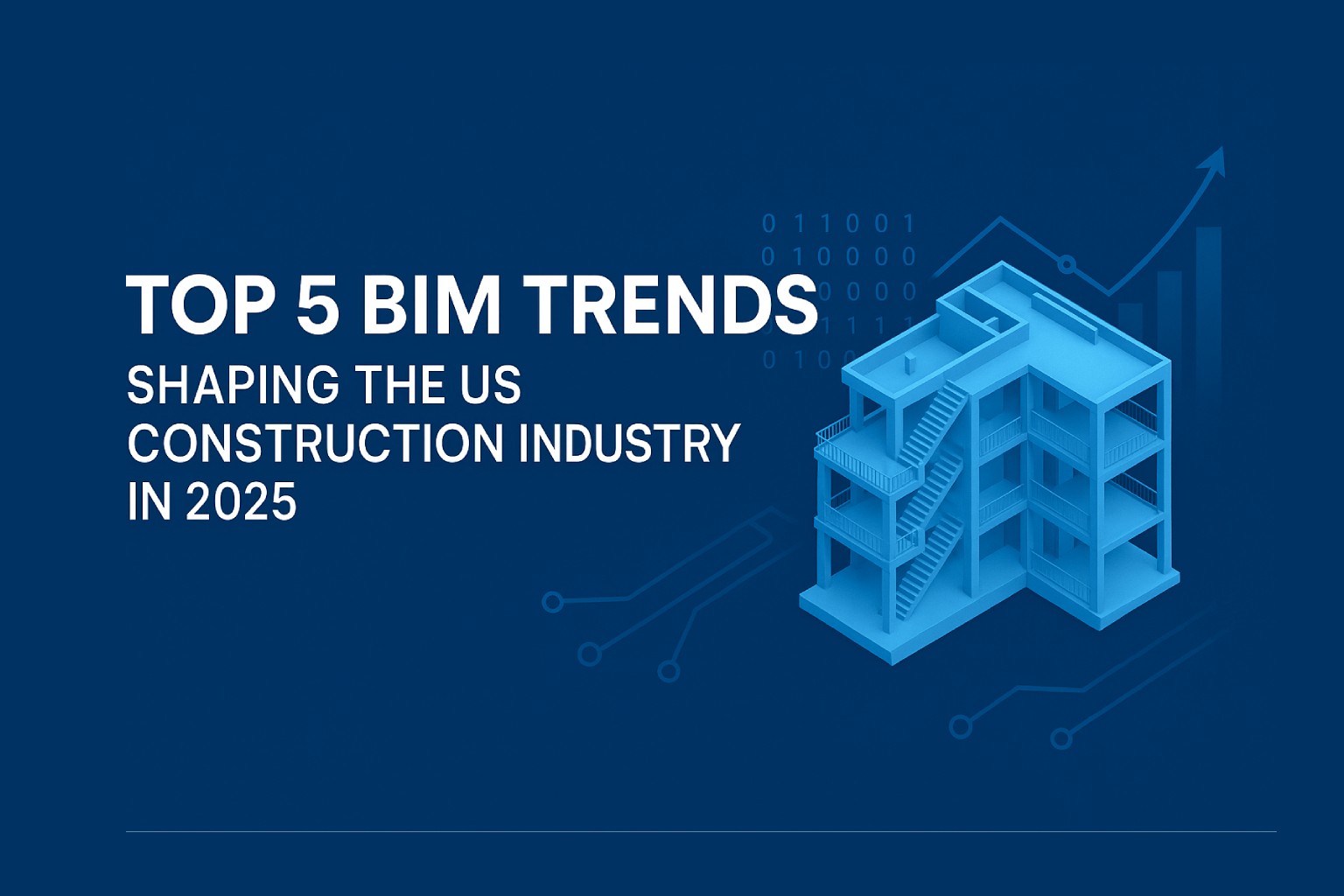Introduction
In today’s digital-first construction world, accuracy, speed, and efficiency are non-negotiable. That’s where Scan to BIM (Building Information Modeling) comes into play. Whether you're renovating an old structure or maintaining a large facility, Scan to BIM is revolutionizing how the AEC (Architecture, Engineering, and Construction) industry captures, models, and manages built environments.
In this guide, we’ll break down what Scan to BIM is, how it works, the tools involved, and why it’s becoming an industry must-have.
What is Scan to BIM?
Scan to BIM is the process of using 3D laser scanning (LiDAR) to capture accurate as-built data of a physical structure and then converting that point cloud data into a 3D BIM model. This digital replica includes detailed architectural, structural, and MEP (Mechanical, Electrical, Plumbing) information. It’s commonly used in:
- Renovations and retrofits
- Facility management
- Clash detection
- Construction verification
How Does Scan to BIM Work?
The Scan to BIM process involves several stages:
1. Laser Scanning the Site
Using terrestrial laser scanners, professionals capture millions of data points (known as a point cloud) from the physical environment. Devices like Leica, Faro, or Trimble scanners are commonly used.
2. Point Cloud Processing
The raw point cloud data is cleaned, registered, and stitched together using software like:
- Autodesk ReCap
- Faro Scene
- Cyclone (Leica)
3. 3D Model Creation in BIM Software
The point cloud is then imported into BIM modeling software (like Autodesk Revit) to develop detailed 3D models. Depending on the project scope, the model may include:
- Architectural elements (walls, doors, windows)
- Structural components (beams, columns)
- MEP systems (ductwork, piping, conduits)
4. Clash Detection & Coordination
Software like Navisworks is used to perform clash detection and coordinate various building systems, ensuring a clash-free and constructible model.
Key Benefits of Scan to BIM for AEC Professionals
✅ 1. Accurate As-Built Documentation
Traditional methods are time-consuming and error-prone. Scan to BIM provides high-precision documentation, ideal for renovation and restoration.
✅ 2. Faster Project Turnaround
Automated scanning and modeling save time on site and in documentation, reducing delays and miscommunication.
✅ 3. Clash Detection & Risk Mitigation
Identifying clashes before construction starts helps avoid costly rework and delays.
✅ 4. Improved Collaboration
A single, unified BIM model enhances collaboration across architects, engineers, and contractors, boosting productivity.
✅ 5. Facility Management
Scan to BIM supports long-term asset and facility management by offering detailed, data-rich models post-construction.
Real-World Applications of Scan to BIM
Here are some practical use cases of Scan to BIM across the industry:
?️ Heritage Building Restoration
Preserving historical structures like churches or monuments using non-invasive 3D scanning and BIM modeling.
? Commercial Renovations
Office complexes undergoing interior redesigns benefit from accurate as-built models for faster execution.
? Healthcare Facilities
Hospitals use Scan to BIM for space planning, MEP coordination, and facility upgrades without disrupting operations.
?️ Infrastructure Projects
Scan to BIM is increasingly used for bridges, tunnels, and airports, where accuracy is critical.
Tools Commonly Used in Scan to BIM
|
Purpose |
Popular Tools/Software |
|
3D Laser Scanning |
Leica, Faro, Trimble |
|
Point Cloud Editing |
Autodesk ReCap, Faro Scene, Cyclone |
|
BIM Modeling |
Autodesk Revit, ArchiCAD, Bentley MicroStation |
|
Clash Detection |
Autodesk Navisworks, Solibri |
|
Visualization |
Navisworks, Unity, Unreal Engine (for AR/VR) |
Scan to BIM: A Strategic Asset for the AEC Industry
Whether you’re working on a complex hospital renovation or a high-rise retrofit, Scan to BIM helps eliminate guesswork, reduces project risk, and ensures all stakeholders are on the same page with a data-rich, digital twin of the structure.
Final Thoughts
In an era where digital construction and BIM adoption are becoming the norm, Scan to BIM is no longer a luxury — it’s a necessity. Embracing this technology not only boosts project efficiency but also positions your business for the future of smart construction.





